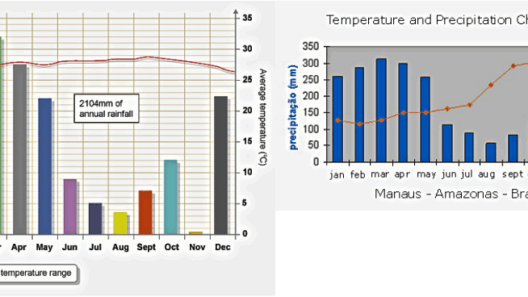Climate change represents one of the most formidable challenges of the modern era, influencing ecosystems, economies, and societies on a global scale. In response, various countries have embarked on distinct trajectories to curtail emissions and mitigate environmental degradation. This discourse delves into the multifaceted actions taken by nations around the world—including some that are making significant strides and others that lag behind.
Countries committed to addressing climate change often engage in international agreements. The Paris Agreement, established during the UN climate change conference in 2015, exemplifies such collective efforts; it compels signatories to establish nationally determined contributions (NDCs) for reducing greenhouse gas emissions. Moreover, financial mechanisms support developing nations in transitioning to greener technologies. For instance, initiatives like the Green Climate Fund provide resources for sustainable development, enabling vulnerable nations to adapt to climate impacts.
In Europe, the European Union (EU) has taken a proactive stance against climate change. Through its European Green Deal, the EU aims to reduce greenhouse gas emissions by at least 55% by 2030, compared with 1990 levels. This ambitious policy encompasses a wide array of measures—ranging from rigorous emissions trading schemes to support for renewable energy projects. Sweden, recognized as a trailblazer in sustainability, has implemented a carbon tax since 1991, motivating businesses to adopt cleaner practices while simultaneously driving innovation in green technologies.
Notably, Scandinavian countries exhibit notable engagement in combating climate change. Norway, for instance, has an overarching strategy that includes a commitment to achieving carbon neutrality by 2030. The country heavily invests in hydropower and electric vehicle infrastructure, aiming to create a more sustainable transportation system. Such investments not only curtail emissions but also position Norway as a leader in clean energy technologies.
In contrast, the United States has displayed a more complex relationship with climate initiatives. While various states and local governments implement ambitious environmental policies, the federal approach has fluctuated depending on the administration. Nonetheless, recent developments indicate a renewed focus on sustainability. The Biden administration’s ambitious climate agenda encompasses rejoining the Paris Agreement, setting a target of 50-52% reduction in emissions by 2030, and investing significantly in clean energy jobs.
Asia comprises a diverse array of responses to climate change. For instance, China stands out as the largest global emitter of carbon dioxide, yet it also invests heavily in renewable energy technologies, dominating the production of solar panels and wind turbines. The country’s commitment to peak carbon emissions by 2030 and achieve carbon neutrality by 2060 reflects a shift towards sustainable development, albeit criticisms persist regarding the pace and sincerity of these efforts.
Conversely, India faces its own unique set of challenges. As a developing nation, India grapples with the dual challenge of economic growth and environmental sustainability. Its NDCs under the Paris Agreement prioritize scaling up the share of non-fossil fuel energy sources while also addressing the pressing need for poverty alleviation. While strides are being made in renewable energy deployment, critics argue that the reliance on coal remains a significant hurdle in achieving comprehensive decarbonization.
Several small island nations exemplify the acute vulnerability posed by climate change, facing existential threats from rising sea levels and extreme weather events. Countries like the Maldives and Tuvalu advocate vigorously for global action, representing a powerful voice in international forums that highlight their precarious situations. These nations often call for financial support to adapt to climatic changes, emphasizing the moral imperative for wealthier nations to assist those significantly impacted by climate phenomena.
Hesitation in action often emerges from political and economic constraints. Countries like Saudi Arabia and Russia exhibit a reluctance to transition away from fossil fuels, influenced by their economic dependencies on oil and gas revenues. The prospect of economic downturn and job losses can foster resistance to climate measures, limiting collective action. Such dynamics underscore the critical intersection between environmental policy and national economic interests.
Meanwhile, public awareness and grassroots movements are catalyzing change across various regions. The Fridays for Future movement, initiated by youth climate activist Greta Thunberg, has galvanized millions around the world to demand impactful climate action. Public pressure can lead to policy shifts and increased accountability, highlighting the pivotal role that civil society plays in addressing climate challenges.
In recent years, businesses have also taken up the mantle of environmental sustainability. Corporations are increasingly recognizing the importance of adhering to sustainable practices, often setting their own ambitious carbon neutrality targets. Innovators in this sector are at the forefront of harnessing technology to develop sustainable products, thus bridging the gap between economic growth and environmental stewardship.
Ultimately, the actions taken by countries regarding climate change reveal a tapestry of commitment, progress, and hesitation. While some nations exemplify leadership through ambitious climate strategies and investment in sustainability, others remain entrenched in fossil fuel pursuits, often shaped by economic realities. The depth of the global climate crisis necessitates collective action, underscoring the need for collaboration and accountability across borders. The efficacy of international agreements, the role of the private sector, and the influence of civil society will be pivotal as humanity strives to navigate this complex and urgent challenge.








